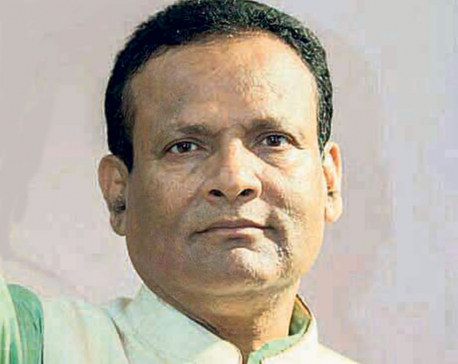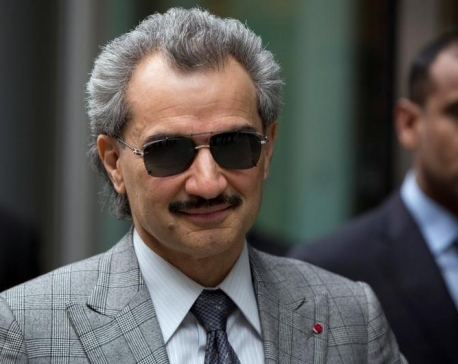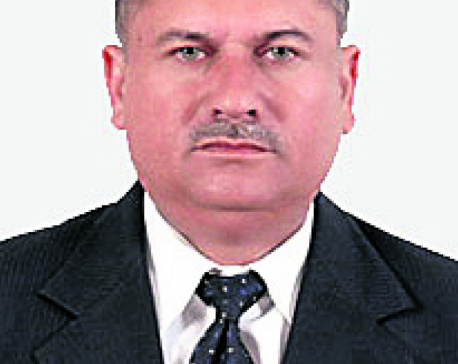
OR
Nepal still among most corrupt countries
Published On: January 24, 2020 08:04 AM NPT By: Republica | @RepublicaNepal
KATHMANDU, Jan 24: Even as the government commitment to overcome pervasive corruption in the country remains unfulfilled, Nepal has made some progress in its fight against corruption, Transparency International (TI) said in its annual report on Thursday. But Nepal still remains among the most corrupt countries in the world.
A survey conducted by the TI has placed Nepal in the 113th position with a score of 34 among the total 180 countries surveyed. In 2018, Nepal was ranked 124th with a score of 31.
TI, an international anti-corruption watchdog, assigns scores starting from zero, and a country securing a score of 100 is considered very clean while the country with the lowest score is taken as the most corrupt. Although Nepal this year secured slightly higher score than last year, experts say there has not been desired progress in controlling corruption.
Statistically, countries with scores below 43 are considered highly corrupt. Countries with 50 or higher scores are taken as relatively good in terms of transparency and good governance.
Among the surveyed countries, Denmark was ranked as the least corrupt country with a score of 87. Somalia, with a score of 9, has been named the most corrupt.
Officials at TI-Nepal argue the election of people’s representatives at the local units improved service delivery and helped Nepal reduce corruption to some extent. “Apart from these, Nepal Army chief himself voluntarily made public his property details and has launched a crackdown in corruption in the organization,” said TI-Nepal’s President Khemraj Regmi, adding, “This also helped Nepal improve its ranking.”
TI’s report has, meanwhile, showed two worrying trends -- efforts at controlling corruption are slowing down across the trend of misusing funds to secure electoral win is growing.
Continuing the previous methodology, six independent organizations including the World Bank and World Justice Project among others have surveyed various indicators to measure the state of transparency and governance in 180 countries.
For example, the World Bank had monitored the state of action against public officials in the surveyed countries, people’s access to information and state government whereas the World Economic Forum had surveyed public service, tax clearance, biddings and corruption in judicial decisions. Global Insight had studied trade, business, tenders, bribe in imports and exports whereas Bertlesmann Foundation studied the misuse of public position. World Justice Project had studied misuse of authority and conflict of interest from government, judiciary and security agencies. Varieties of Democracy Project surveyed the state of political corruption in the executive and judiciary.
Of the surveyed issues the study shows improvements in trends of misuse of power, actions of corruption controlling bodies and judiciary, tax recovery related decisions.
Despite progress in some areas the survey has stated that there are lapses in implementing the commitments made from the government for controlling corruption. It has expressed concerns over Nepal’s failure to stop misuse of positions in public service, trade and entrepreneurship.
Also, lack of people’s access to information, continuous control over state power by a limited number of people and pervasive corruption in political sectors have been described as major challenges to Nepal’s fight against corruption.
“That’s why Nepal is still categorized as one of the most corrupt countries despite some progress,” said TI-N Chairman Regmi.
In South Asia, Bhutan, India and Sri Lanka are less corrupt than Nepal, according to the report. Bhutan has been placed in the 25th position with a score of 68, India in the 80th position with a score of 41 and Sri Lanka with a score of 38 is in the 93rd position.
Pakistan, Bangladesh, Maldives and Afghanistan have fared even worse than Nepal. Similar to India, China has been ranked in 80th position with a score of 41.
You May Like This

Fate of dozens of contracts handled by Pappu Construction uncertain
KATHMANDU, Oct 7: Corruption against promoters of Pappu Construction Pvt Ltd Hari Narayan Rauniyar and Sumit Rauniyar over the substandard... Read More...

Saudi billionaire Prince Alwaleed released as corruption probe winds down
RIYADH, Jan 27: Saudi Arabian billionaire Prince Alwaleed bin Talal was released from detention on Saturday, family sources said, more... Read More...

Five govt officials, one JV representative charged with corruption
KATHMANDU, April 2: The Commission for the Investigation of Abuse of Authority (CIAA) has filed charges against Nalsing Gad Hydropower Development... Read More...





Just In
- CM Kandel requests Finance Minister Pun to put Karnali province in priority in upcoming budget
- Australia reduces TR visa age limit and duration as it implements stricter regulations for foreign students
- Govt aims to surpass Rs 10 trillion GDP mark in next five years
- Govt appoints 77 Liaison Officers for mountain climbing management for spring season
- EC decides to permit public vehicles to operate freely on day of by-election
- Fugitive arrested after 26 years
- Indian Potash Ltd secures contract to bring 30,000 tons of urea within 107 days
- CAN adds four players to squad for T20 series against West Indies 'A'













Leave A Comment